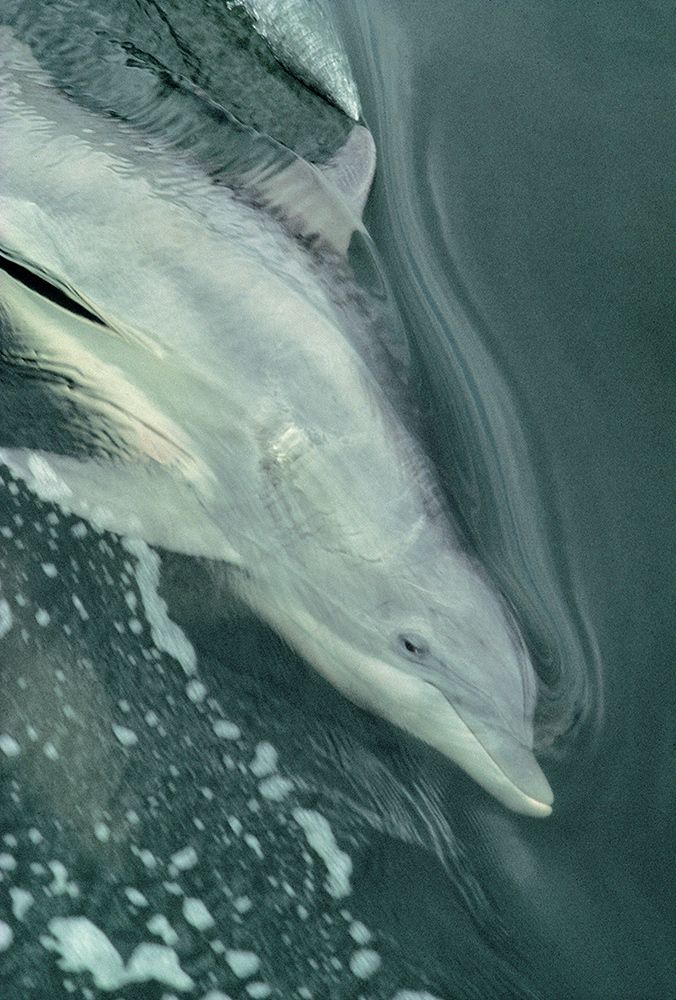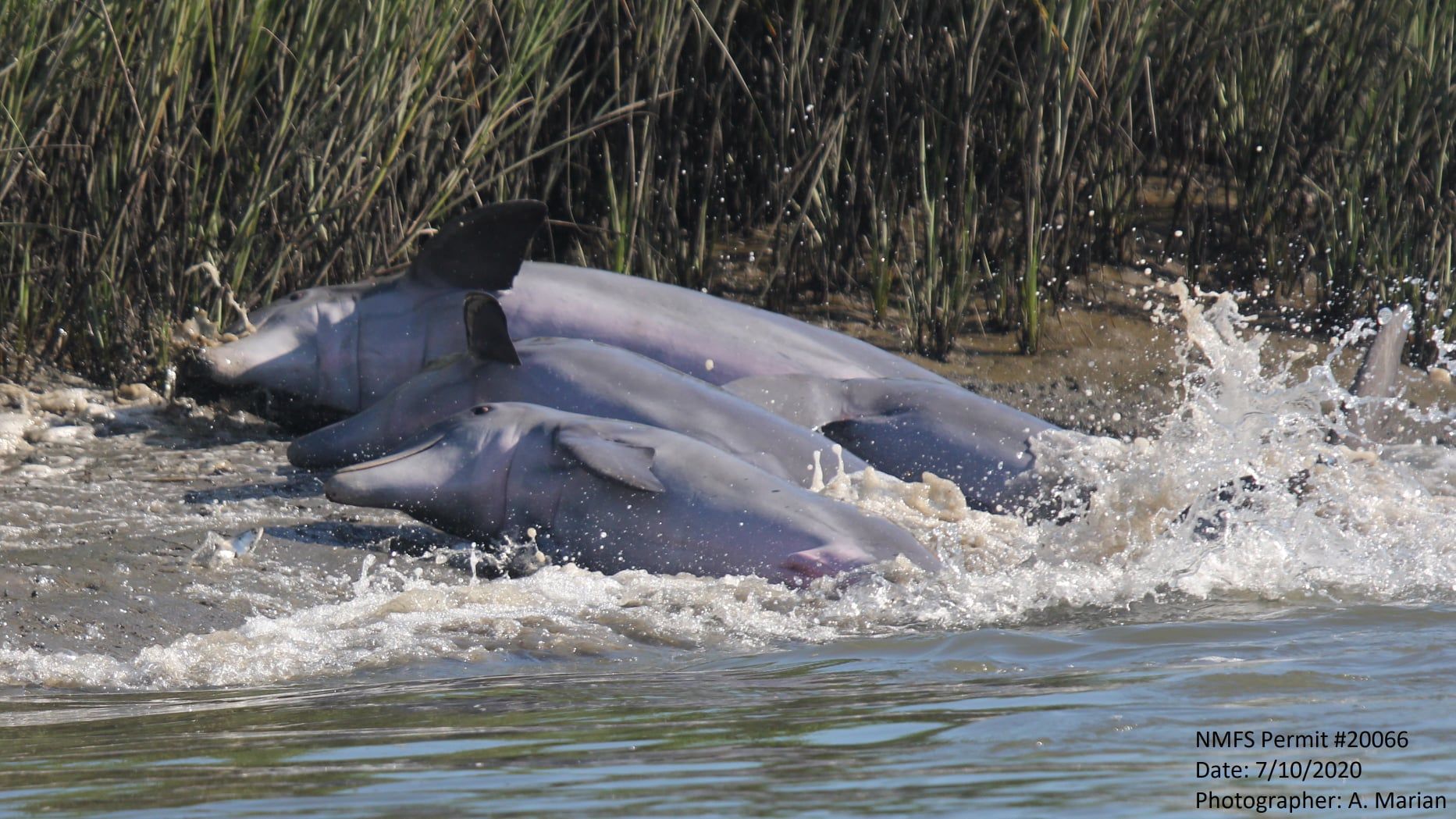Research and Conservation
Dolphin Studies
Bottlenose dolphins are charismatic marine mammals that attract the attention and affection of almost all who watch them. As long-lived top predators in the marine food web, they can also serve as “canaries in the coal mine” indicating when environmental health is in jeopardy.
The LowCountry Institute is a co-sponsor of dolphin studies being conducted in the Chechessee, Colleton, and Okatie Rivers by the Marine Neuro Lab at USCB. Two underwater microphone recorders were installed — one on the Colleton River and one on the Chechessee River — to monitor the health of this river network. This remote sensing technology simultaneously measures physical parameters and three biological parameters of tidal river health: (a) the abundance of snapping shrimp, an “environmental canary” species analogous to the well-known grass shrimp; (b) the breeding activity of common estuarine fish species that vocalize during mating; and (c) the activity of specific dolphins visiting tidal rivers. The most common species of fish being heard are the oyster toadfish, spotted seatrout, and Atlantic croaker. Dolphins are heard as well with echolocation being the most common vocalization.
So far, the researchers have recorded more than 93 individual dolphins in the Chechessee/Colleton/Okatie system, including 9 mother/calf pairs. They have recorded more dolphin sightings during the summer, which had a greater distribution throughout the study site than in the winter. There were fewer winter sightings overall and more of these sightings were made in Chechessee Creek as compared to the Colleton-Okatie River System. In winter, dolphins appear to be hunting in deeper water where fish find refuge from colder surface waters.
Check out their posts of their dolphin surveys on Facebook.
LCI served as one of the partners in an ongoing study of dolphin health and environmental risk assessment being spear-headed by NOAA (the National Oceanographic and Atmospheric Administration). In August 2013, 22 dolphins were captured, evaluated on a variety of health parameters, and successfully released during the study. Past assessments of dolphins in Charleston Harbor indicated that less than 50% of the dolphins evaluated were considered to be in good health.
The long-term goal is to expand the study so that it includes dolphin populations in Port Royal Sound as well. As Dr. Patricia Fair, director of the study, wrote, “We certainly would not have been able to do this study without the support of the LowCountry Institute. Thank you so much for helping us with this research study and contributing to better understand the connections between dolphins and their environment and us.”
* photo by Eric Horan

Copyright © Spring Island Trust
40 Mobley Oaks Ln. · Okatie, SC 29909 · 843-987-7008
Site by Sans Sheriff Studio


